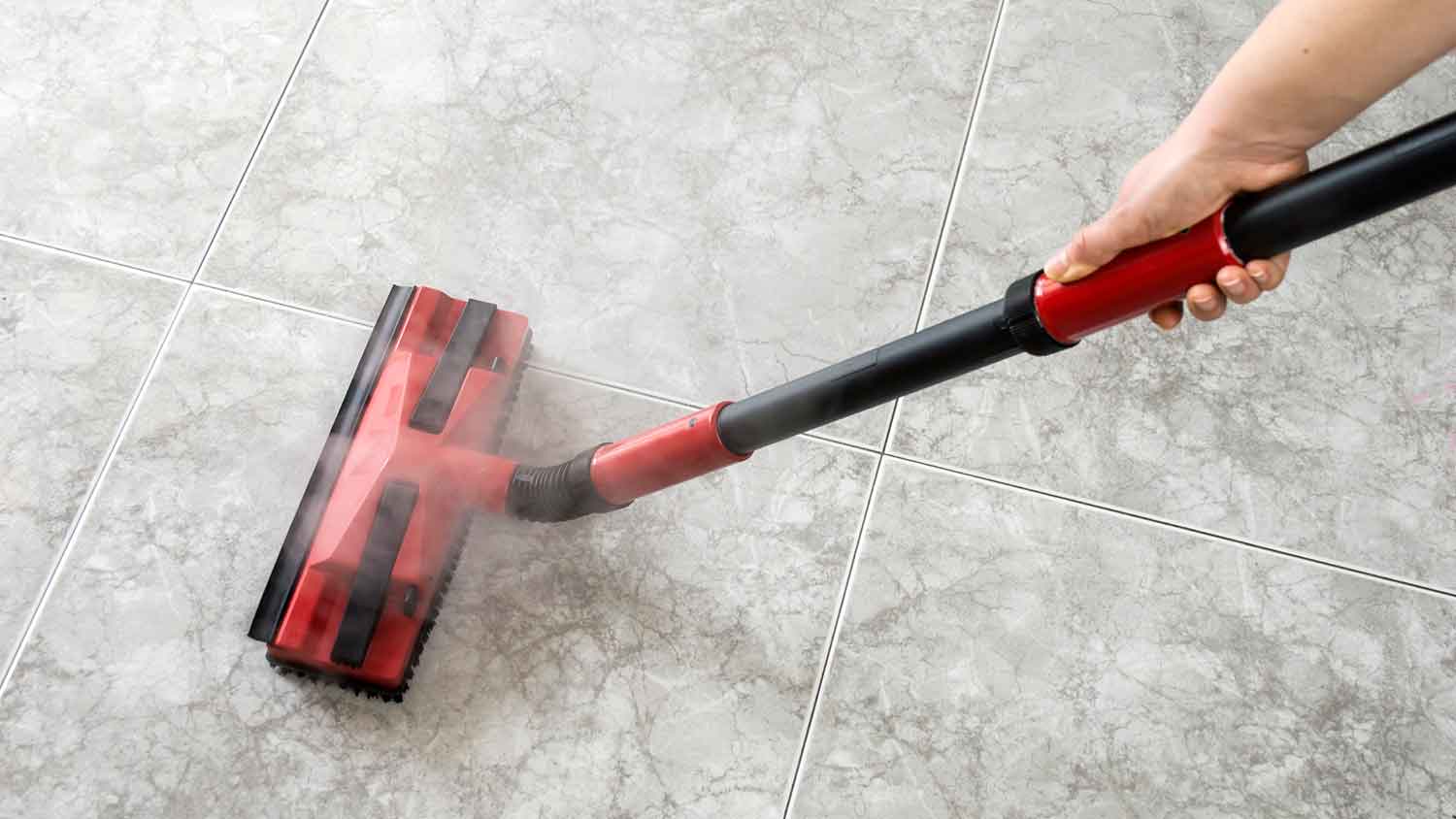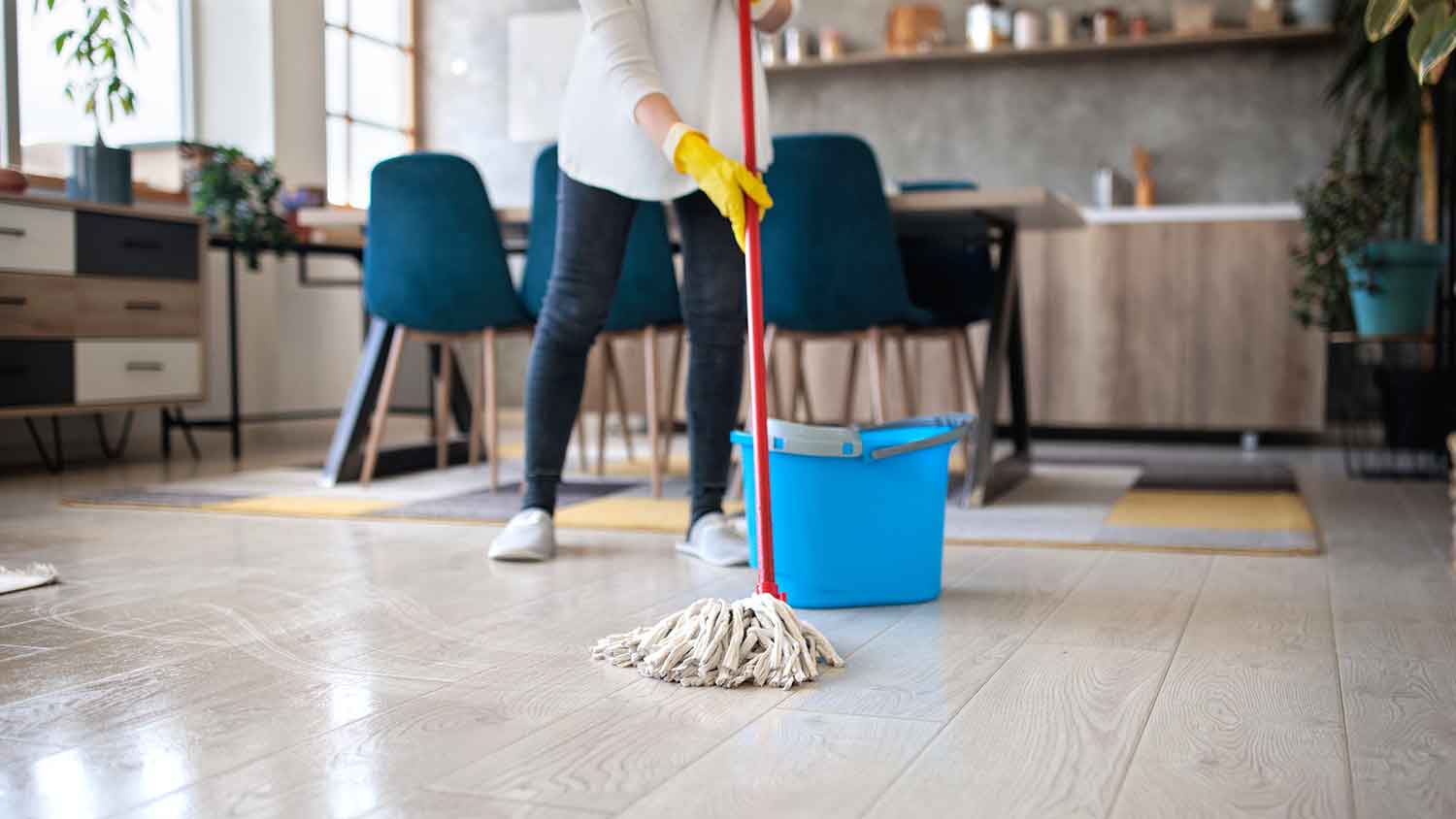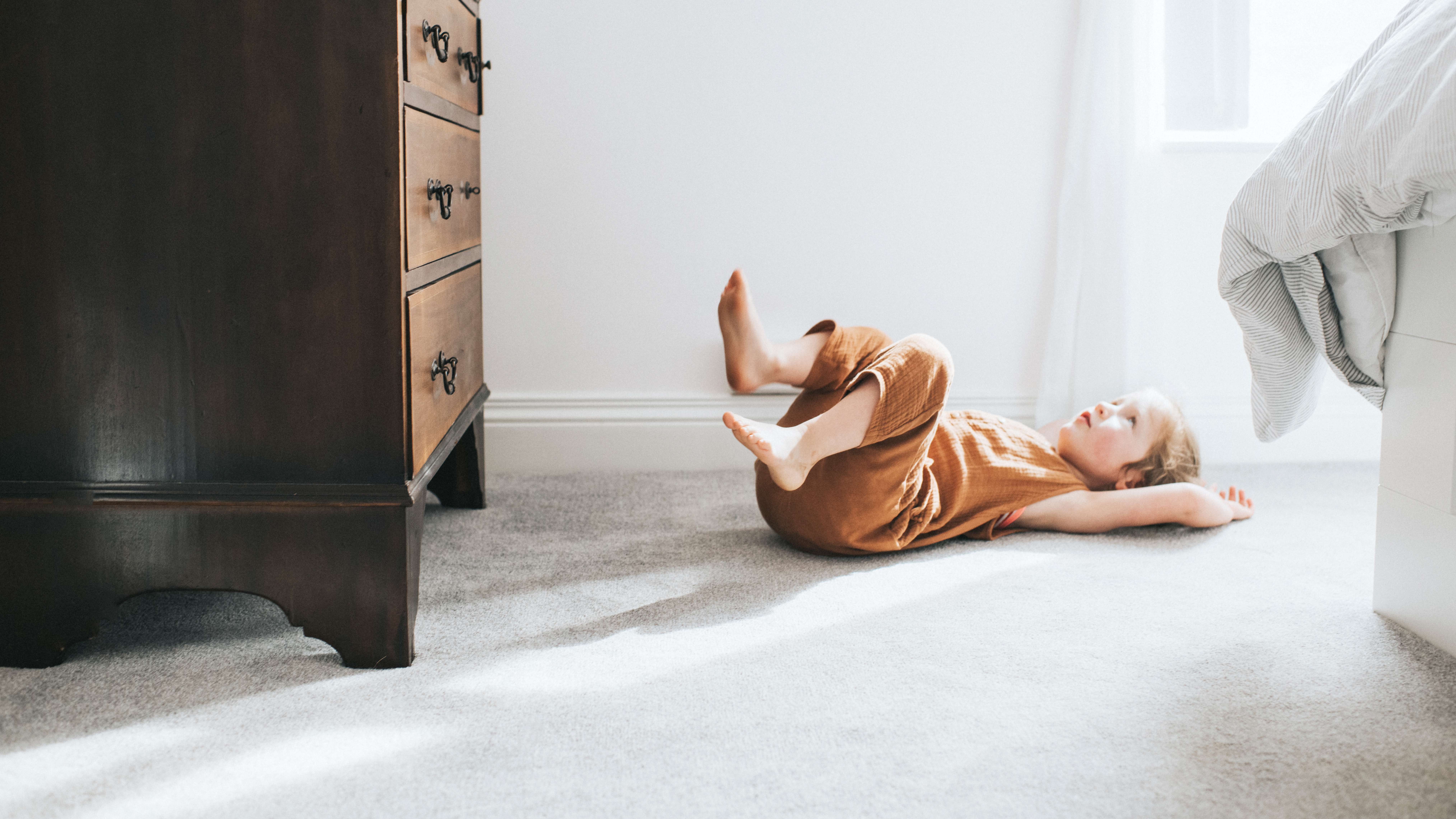
Keeping a carpet clean and fresh can make your home a safer and healthier place to be. Learn how to disinfect carpeting with this guide.
Select the best strategy for squeaky clean, sanitary surfaces


Steam mops use hot steam to sanitize flooring.
A regular mop and bucket relies on manually scrubbing in a warm water and cleaning detergent solution.
Both are effective, but regular mopping can spread germs if you don’t use the right techniques.
A well-wrung-out mop is safe for any floor, but avoid using steam mops on hardwood or composite flooring, as moisture can get into cracks and cause damage.
Vacuuming your floors might suck up dust bunnies and debris, but it won’t sanitize surfaces or get rid of stuck-on grime. That’s where mopping comes in. If you’re looking at tools to fast-track this chore, you might be weighing whether to use a steam mop versus a regular mop to keep your floors clean.
Below, we’ve broken down the differences between sophisticated steam power and conventional cleaning with a mop and bucket to help you decide which scrubs up the best.

Electrically-powered steam mops clean flooring using a stream of hot steam that helps loosen dirt and grime and sanitize the surface. You need to dip a traditional string or microfiber mop in a bucket of warm water containing a cleaning solution before manually wringing it out and sliding it across the flooring to scrub it clean.
Your flooring type, budget, and cleaning preferences influence whether a steam mop or a regular mop works best for you.
| Feature | Steam Mop | Regular Mop |
|---|---|---|
| Effectiveness | Kills germs well | Good with proper use |
| Speed | Faster | Extra steps add time |
| Effort | Low-intensity | Medium-intensity |
| Environmental Impact | Low | Mid to Low |
| Flexibility | Cleans other items | Only cleans floors |
| Safety | Steam can burn | Minimal risk |
| Cost | Mid-range | Budget-friendly |
There are various factors to consider when comparing the cleaning differences between a steam mop versus a regular mop.

Steam mops rely on a steady stream of hot steam—up to 250 degrees Fahrenheit—to penetrate stuck-in grease and grime. They clean and sanitize surfaces effectively, and studies suggest they kill most problematic germs if used properly. This makes them a popular choice for households with immunocompromised family members or people living with allergies.
A steam mop is handy for cleaning floor tile grout and other tricky-to-reach spots that regular mops might glide over or around. Also, because the steamy moisture is quick-drying, it reduces the risk of mold and mildew formation.
If you use a regular mop properly and pick the right cleaning solution and mop head type—microfiber is popular—it can also sanitize effectively. However, double-dipping into dirty water and scrubbing with an over-soggy mop head can spread germs and leave surfaces too wet.
Let’s face it, cleaning large swathes of flooring takes time, regardless of whether you use a steam mop or regular mop. However, cleaning with a steam mop is usually faster. It glides over the surface effortlessly—no scrubbing required to clean sticky floors—and while you might have to fill the water tank, you won’t have to constantly rinse and wring out a mop head or replace dirty bucket water.
Steam mopping is less labor-intensive than regular mopping. Steam mops quickly clean surfaces, effortlessly lifting dirt and grime. In large rooms, you might have to refill the water tank and move the power cable to a new outlet as you move from room to room, but it’s not a major effort.
Regular mopping—with the rinsing, wringing out, and floor scrubbing—requires more elbow grease. You also have to lug around a heavy bucket, and in large living spaces, you might need to change the water a few times.
Steam mops are often touted as being more environmentally friendly. They clean without the use of harsh chemicals, and you’ll use less water than filling up a big bucket. However, these machines aren’t exactly recyclable, and the electricity they use still contributes to CO2 emissions.
Selecting a renewable, natural mop head, using gentle detergents, and not overfilling your bucket can minimize the environmental impact of cleaning this way.
You might be able to use a steam mop to streamline other cleaning tasks in your home. Some models have attachments allowing you to clean upholstery, countertops, bathroom wall tiles, shower screens, and windows. You’re restricted to floor cleaning with a regular mop.

Whether you can opt for a steam mop or have to stick with a regular mop depends on your home’s floor type. Experts typically don’t recommend steam mops for hardwood flooring or other surfaces with gaps, such as laminate or vinyl tiles. The steam forcing its way into these gaps can cause irreparable damage, such as buckling, swelling, joint separation, and delamination (splitting of material layers). Plus, steam cleaning typically invalidates flooring warranties.
Cleaning a tile floor or other sealed stone with a steam cleaner is usually fine, but always check the manufacturer’s recommendations. When in doubt, stick with a regular mop. That way, you can thoroughly wring out the mop head to prevent excess water from doing damage.
If you’re concerned about getting tough-to-remove grime out of hardwood floorings, it might be worth calling a professional floor cleaner near you.
If your kids want to clean your floors to add to their allowance, then a regular mop might be the way to go. If they accidentally hit themselves or others with the steam spray, it can cause nasty burns. Mopping is a safer alternative, especially if you opt for gentle cleaning detergents.
Stick with a regular mop and bucket if you have a tight budget. A steam mop costs $50 to $150, whereas you can buy a budget microfiber mop, bucket, and cleaning products for less than $10. Even top-of-the-range mops made with renewable materials and fancy features, like swivel heads, and a wheelable bucket, won’t set you back more than $50. Yes, you’ll have to replace the mop head now and again, but it’s still not going to break the bank.
From average costs to expert advice, get all the answers you need to get your job done.

Keeping a carpet clean and fresh can make your home a safer and healthier place to be. Learn how to disinfect carpeting with this guide.

Here’s how to get paint off of wood floors, no matter what type of paint it is or just how much of it you need to remove.

Don’t stress about dog urine (and the smell) ruining hardwood floors. Read about different DIY and natural methods for removing pet urine from hardwood floors.

Whether it’s wine, chocolate, or pet urine, there are many ways to remove stubborn carpet stains. Learn how to get all kinds of stains out of your carpet.

Many homeowners want to know how often they should mop their floors. Depending on the room and household size, it may be more often than you think.

Wish your carpet would dry faster after cleaning? Here’s how to dry carpet after cleaning without the mold, odor, or damage.